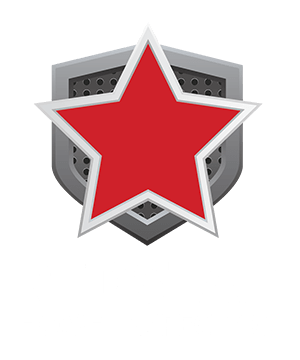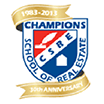Home Inspection Terms – Glossary – Facade to Fuse box
Facade:
A facade is the principal, exterior face of a structure; usually the front face or front elevation of a building.
Face: The most important side of a structure; the front or facade. The exposed surface of an object, such as the earth, structure, wall, panel.
Face Brick: A better grade of brick used for an exterior wall of a building, often only on the face.
Face Nail: To nail into the face of a piece of wood or other building material.
Face Plate: The exterior surface around an opening, corner or edging.
Face Wall: A wall, usually of masonry, that has an exterior face of a different material; the two materials are bonded so that they serve as a single load-bearing unit.
Family Room: An informal living room, usually the center of family activities.
Fan Window: See circlehead window.
Fascia (or Facia): A horizontal board that is nailed vertically to the ends of roof rafters: sometimes supports a gutter.
FBT: (Flexible Black Tubing Feathering) The tapering of one surface into another.
Feathering Strips: Tapered wood filler strips placed along the butts of old wood shingles to create a level surface when re-roofing over existing wood shingle roofs. Also called horse feathers.
Felt: Fibrous material saturated with asphalt and used as an underlayment or sheathing paper.
Fiberboard: A prefabricated building material made of wood or other plant fibers compressed and bonded into a sheet.
Fiberglass: Fine spun filaments of glass that are made into yarn and used in batts as insulation; added to gypsum concrete products to increase tensile strength.
Fiberglass Mat: An asphalt roofing base material manufactured from glass fibers.
Field Tile: Porous tile placed around a building’s foundation to drain off excess water and prevent seepage into the foundation.
Filtch Beam: A beam composed of two timber beams between which has been placed an iron plate and all three secure bolted together.
Filter: A device for separating liquids from solids or straining impurities from liquids; any porous material such as filter paper, charcoal, etc,; a device for removing paper from the air.
Finish Floor: The top flooring of hardwoods, linoleum, terrazzo or tile, laid over the subfloor.
Firebrick: A brick made of fireclay that is capable of resisting high temperatures and used to line heating chambers at fireplaces.
Fire Doors and Walls: Doors and walls constructed of fire resistive materials designed to prevent the spread of fire.
Fireplace Insert: Wood-burning stove designed to be installed in a fireplace. Its purpose is to make the fireplace more efficient.
Fireproofing: The use of incombustible materials to protect the structural components of a building so that a complete burnout of its contents will not impair its structural integrity.
Fire Retarding Material: Material that tends to inhibit combustion.
Fixed Window: A window that does not open; e.g., fixed bay window, fixed bow window, picture window.
Fixture: Any non-portable lighting device which is more or less permanently built in or attached securely to the walls and/or ceiling. The permanent parts of a plumbing system such as toilets, bathtubs, etc.
Flagstone: A flat, irregular slab of stone usually sandstone or shale, used for paving walks, patios, terraces and planter boxes.
Flange: Projecting rim or collar, such as on a skylight, that aids attachment or increases stiffness.
Flank: The side of a building or of an arch.
Flashing: Sheet metal or other thick, impervious material used around roof and wall junctions to protect the joints from water penetration.
Flashing Cement: See Asphalt Plastic Cement
Flat Roof: A roof with just enough slope to provide for proper drainage; one with a pitch that does not exceed 20 degrees.
Flood Plain: The land adjoining an ocean, river, stream, bay or lake which is likely to be flooded.
Floodprone Area: Any land area susceptible to being inundated by floodwater from any source.
Floor: The total horizontal surface of a room or building.
Floor Furnace: A metal, box-like warm-air furnace installed directly under the floor so that its grilled upper surface is flush with the finished floor of the room above.
Floor Joists: Horizontal framing member to which flooring is attached.
Flue: A passageway in a chimney for conveying smoke, gases or fumes to the outside air.
Flue Lining: The tile or pipe inside a chimney.
Fluorescent Lighting: Lighting fixtures consisting of glass tubes with an inside coating of fluorescent material that produces light when subjected to a stream of electrons from the cathode.
Footing: A masonry section, usually concrete, in a rectangular form wider than the bottom of the foundation wall or pier supports.
Formica: A trade name for a plastic material used primarily on counter tops, but also on wall covering, plywood panels and wallboard, where a fire-resistive material is desirable; similar materials are produced under other trade names.
Foundation: That upon which anything is built; that part of a structure upon which the building is erected; usually that part of a building which is below the surface of the ground and on which the superstructure rests.
Foyer: An entrance hall in a house.
Frame: The load-bearing skeleton of a building.
Framing Anchor: A corrosion-resistant (galvanized) pre-engineered metal piece designed to fasten wooden members together or to masonry. They prevent lateral motion and/or uplift. Also called hurricane clips.
Free-Tab Shingles: Shingles that do not contain factory-applied strips or spots of self-sealing adhesive.
French Drain: An underground drain tile surrounding a foundation for the purpose of routing water either to daylight or a sump pump.
French Doors or Windows: A pair of glazed doors that are hinged at the jamb and function as both doors and windows.
Freon: A trade name for a group of nontoxic, nonflammable refrigerants used in air-conditioning systems.
Frieze: A horizontal trim piece immediately below the cornice soffit.
Front: The primary face of a structure, particularly that which contains the principal entrance.
Frost Line: The depth of frost penetration in soil. This depth varies in different parts of the country.
Full House Fan: A large fan normally located in the ceiling between the top floor and the attic. It is used to pull air through a building to cool it.
Functional Drainage: A drain is functional when it empties in a reasonable amount of time and does not overflow when another fixture is drained simultaneously.
Functional Flow: A reasonable flow at the highest fixture in a dwelling when another fixture is operated simultaneously. See water flow-minimum rate 3 GPM per average living unit.
Furring: Strips of wood or metal applied to a wall or other surface to even it and normally to serve as a fastening base for finish material.
Fuse: Safety device in an electric circuit designed to blow or open and stop flow of electricity when current exceeds a predetermined safe amount.
Fuse Box:
A fuse box is the container housing the fuses that control the electrical circuits of a structure.






